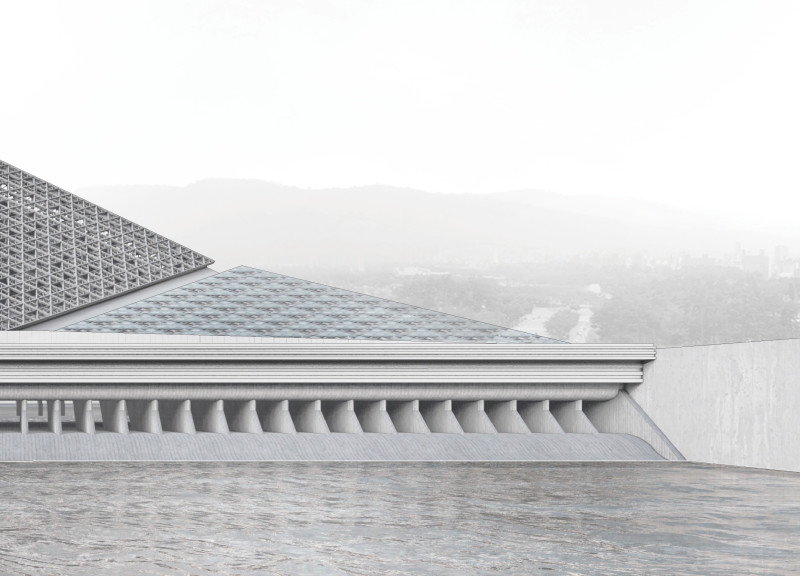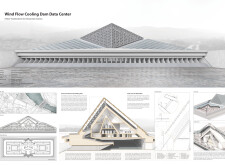5 key facts about this project
**Project Overview**
Located in Palangpang, Gresik, East Java, Indonesia, the Wind Flow Cooling Dam Data Center integrates advanced data management functions within the existing infrastructure of the Paladang Dam. The design seeks to enhance the operational capabilities of the dam while promoting sustainability through innovative cooling technologies that draw on natural environmental elements. This approach reflects a strategic initiative to repurpose underutilized resources for urban data processing, aligning with contemporary needs for efficiency and ecological responsibility.
**Integration with Natural Elements**
The project’s architectural framework emphasizes an interplay between built and natural environments. Utilizing a dual-layer system, the design effectively channels ambient air flows to minimize energy consumption for cooling. The primary layer captures wind, while the secondary layer refines and directs airflow to the data processing areas, utilizing the dam's location to optimize cooling efficiency. Additionally, the building's pyramid-like form is purposefully crafted to enhance wind currents, contributing both to aesthetic appeal and functionality.
**Material Selection and Aesthetic Composition**
Materials chosen for the data center's construction prioritize durability and energy efficiency. Concrete forms the core structure, while a steel framework ensures support and flexibility. Glass elements are strategically placed to maximize natural lighting, thus reducing reliance on artificial sources and fostering a connection with the surrounding environment. The use of wood in specific interior spaces creates a welcoming atmosphere. This thoughtful selection of materials reflects a commitment to both performance and visual harmony within the local context.



















































